
Overview
The metal processing industry encompasses a range of activities involved in shaping, refining, and transforming raw metal materials into finished products. It includes processes such as casting, forging, machining, welding, and surface treatment. This industry plays a crucial role in manufacturing sectors, providing materials for construction, automotive, aerospace, and consumer goods. Technologies within this sector continually evolve to enhance efficiency, sustainability, and product quality. Metal processing is essential for creating diverse products, from intricate machine parts to large-scale structural components.
Depending on specific features and functions, GAO Tek’s Hydrogen cyanide gas detectors are sometimes referred to as hcn gas sensors, hydrocyanic acid detectors, cyanide gas detectors, prussic acid sensors, hydrogen cyanide gas monitors, hcn vapor detectors, and cyanide gas alarms.
Furthermore, GAO Tek’s hydrogen cyanide gas detectors are further grouped into:
Benchtop, Calibrated, Fast-response, Handheld, Alarm, Rugged, and Wireless.
GAO Tek’s Hydrogen cyanide gas detectors have the following applications in the metal processing industry industry:
- Safety Monitoring: Metal processing often involves chemical treatments such as pickling and electroplating, which may release hydrogen cyanide gas as a byproduct. GAO’s hydrogen cyanide gas detectors are deployed in areas where such processes occur to monitor HCN levels, alerting workers to potential exposure and allowing for prompt evacuation if necessary.
- Emission Control: Metal refining processes can emit hydrogen cyanide gas into the atmosphere. GAO’s hydrogen cyanide gas detectors are integrated into emission control systems to continuously monitor gas levels, ensuring compliance with environmental regulations and minimizing the release of harmful pollutants.
- Accident Prevention: In the event of equipment malfunction or chemical spills, GAO’s hydrogen cyanide gas detectors serve as early warning systems, triggering alarms when gas concentrations exceed safe levels. This enables rapid response measures to contain the situation and mitigate risks of accidents or chemical exposure.
- Process Optimization: By providing real-time data on hydrogen cyanide concentrations, GAO’s hydrogen cyanide gas detectors assist in optimizing metal processing operations. Operators can adjust parameters to minimize the generation of HCN gas, improve process efficiency, and reduce resource consumption.
- Health Protection: Metal processing workers are at risk of exposure to hydrogen cyanide gas, which is highly toxic. GAO’s hydrogen cyanide gas detectors play a crucial role in safeguarding their health by continuously monitoring workplace environments and triggering alarms at the first sign of hazardous gas levels, prompting the use of personal protective equipment and evacuation procedures.
More information on hydrogen cyanide gas detectors and their applications in other industries can be found on Hydrogen cyanide gas detectors. This category page lists related products in the Environmental.
Systems in the Metal Processing Industry Utilizing Hydrogen Cyanide Gas Detectors
Here are some popular systems in the metal processing industry using hydrogen cyanide gas detectors:
Emission Control Systems:
- Gas Detection Network: Utilizes hydrogen cyanide gas detectors strategically placed throughout metal processing facilities to continuously monitor air quality. Integrated software collects and analyzes data in real time, providing insights into emission levels and facilitating regulatory compliance.
- Emission Monitoring Software: Manages data from HCN detectors, tracks emissions, generates reports, and ensures adherence to environmental regulations. Features may include trend analysis, alarm notifications, and historical data storage for auditing purposes.
Safety Monitoring Systems:
- Workplace Safety Alarms: Hydrogen cyanide gas detectors are integrated into workplace safety systems, triggering alarms when gas concentrations exceed safe levels. The software manages alarm notifications, evacuation procedures, and employee safety protocols, ensuring rapid response to potential hazards.
- Safety Compliance Software: Tracks gas detection data, safety equipment inspections, employee training records, and incident reports related to hydrogen cyanide exposure. Facilitates compliance with occupational health and safety regulations and enables proactive risk management.
Process Optimization Systems:
- Process Control and Automation: HCN gas detectors are linked to process control systems to optimize metal processing operations. The software analyzes gas concentration data, adjusts process parameters in real time, and optimizes production efficiency while minimizing HCN emissions.
- Optimization Analytics Software: Utilizes data from hydrogen cyanide detectors along with other process variables to identify optimization opportunities, predict equipment maintenance needs, and improve overall process performance. Features advanced analytics, machine learning algorithms, and visualization tools for decision support.
Emergency Response Systems:
- Chemical Spill Management Software: Integrates hydrogen cyanide gas detection data with spill detection sensors and emergency response protocols. The software automatically triggers alarms, alerts response teams, and guides containment procedures and evacuation routes in case of chemical spills or leaks.
- Emergency Preparedness Planning Tools: Utilizes historical data from HCN detectors to simulate emergency scenarios, evaluate response strategies, and refine emergency preparedness plans. Software facilitates training exercises, drills, and scenario-based simulations to enhance readiness for potential incidents.
Health Monitoring Systems:
- Occupational Health Monitoring Software: Manages data from hydrogen cyanide detectors deployed in employee work areas to monitor occupational exposure levels. The software tracks individual exposure records, conducts risk assessments, and facilitates medical surveillance programs to safeguard employee health.
- Health Risk Assessment Tools: Integrates gas detection data with employee health records and exposure thresholds to assess long-term health risks associated with hydrogen cyanide exposure. The software calculates cumulative exposure metrics, conducts dose-response modeling, and generates personalized risk profiles for employee health management.
GAO Tek’s targeted markets are North America, particularly the U.S. and Canada.
Complying with Government Regulations
GAO Tek’s hydrogen cyanide gas detectors comply or help our customers comply with U.S. government regulations such as:
- Occupational Safety and Health Administration (OSHA) Regulations
- Environmental Protection Agency (EPA) Regulations
- National Fire Protection Association (NFPA) Standards
- Department of Transportation (DOT) Regulations
- Federal Energy Regulatory Commission (FERC) Guidelines
- Federal Aviation Administration (FAA) Safety Regulations
- Financial Industry Regulatory Authority (FINRA) Guidelines
- National Institute of Standards and Technology (NIST) Guidelines
- Department of Homeland Security (DHS) Security Regulations
- State and Local Regulations
GAO Tek’s hydrogen cyanide gas detectors help our clients comply with Canadian regulations such as:
- Occupational Health and Safety Regulations
- Environmental Protection Regulations
- Technical Standards and Safety Authority (TSSA) Guidelines
- Transport Canada Regulations
- National Building Code
- Canadian Standards Association (CSA) Standards
- Financial Consumer Agency of Canada (FCAC) Guidelines
- Canadian Securities Administrators (CSA) Regulations
- Provincial and Territorial Insurance Regulations
- Local Government Bylaws
Case Studies of Hydrogen Cyanide Gas Detectors in the Metal Processing Industry
Hydrogen cyanide gas detectors are sometimes called gas sensors, hydrocyanic acid detectors, cyanide gas detectors, prussic acid sensors, hydrogen cyanide gas monitors, hcn vapor detectors, and cyanide gas alarms.
Here are some practical examples of using Hydrogen cyanide gas detectors in the metal processing industry:
In the Northeast Region of the United States, A steel manufacturing plant in Pennsylvania implements a comprehensive safety program, including the installation of hydrogen cyanide gas detectors in critical areas such as pickling and galvanizing lines. The detectors, integrated with advanced alarm systems and safety protocols, help prevent worker exposure to HCN during metal processing operations.
In the Northeast Region of the United States, A metal foundry in New York implements hydrogen cyanide gas detectors as part of its emission control strategy. The detectors, coupled with real-time monitoring software, enable the facility to accurately track HCN emissions, ensure compliance with environmental regulations, and minimize environmental impact.
In the Western Region of the United States, An aluminum extrusion facility in Ohio utilizes hydrogen cyanide gas detectors to optimize its metal processing operations. By monitoring HCN levels in the anodizing process, the plant adjusts process parameters in real time, reducing HCN emissions and improving operational efficiency.
In the Western Region of the United States, A die-casting plant in Michigan enhances workplace safety by deploying hydrogen cyanide gas detectors in casting and finishing areas. Integrated with safety alarms and evacuation procedures, the detectors ensure prompt response to HCN leaks or spills, safeguarding employee health.
In the Southern Region of the United States, A galvanizing facility in Texas implements hydrogen cyanide gas detectors to ensure compliance with air quality regulations. The detectors, supported by emissions monitoring software, enable the plant to maintain HCN emissions within permissible limits and mitigate environmental impact.
In the Southern Region of the United States, A heat treatment plant in Georgia enhances its emergency preparedness by deploying hydrogen cyanide gas detectors throughout the facility. Integrated with emergency response systems, the detectors facilitate rapid detection of HCN leaks and prompt evacuation of personnel in case of emergencies.
In the Eastern Region of the United States, A copper smelting facility in Arizona integrates hydrogen cyanide gas detectors into its process control systems. By monitoring HCN levels in the smelting process, the facility optimizes furnace operations, minimizes HCN emissions, and improves overall production efficiency.
In the Eastern Region of the United States, A metal plating shop in California enhances workplace safety by installing hydrogen cyanide gas detectors in plating tanks and ventilation systems. The detectors, coupled with safety protocols and employee training programs, mitigate the risks of HCN exposure during metal processing activities.
In the Canadian Region, A car parts manufacturing plant in Ontario employs hydrogen cyanide gas detectors to control emissions from metal processing operations. The detectors, linked to emission control systems, help the plant maintain compliance with environmental regulations and reduce its environmental footprint.
In the Canadian Region, A mining equipment fabrication facility in Alberta improves workplace safety by implementing hydrogen cyanide gas detectors in welding and fabrication areas. Integrated with safety protocols and employee training initiatives, the detectors ensure early detection of HCN hazards and prompt response measures.
GAO RFID Inc. https://gaorfid.com, a sister company of GAO Tek Inc., is ranked as the top 10 RFID suppliers in the world. Its RFID, BLE, and IoT products have also been widely used in the metal Processing Industry. Articles about related industries are given below:
Property & Equipment Management
Use of Hydrogen Cyanide Gas Detectors with Leading Software and Cloud Services in the Metal Processing Industry
GAO Tek has used or has facilitated its customers to use GAO’s hydrogen cyanide gas detectors with some of the leading software and cloud services in their applications. Examples of such leading software and cloud services include:
- Alteryx Analytics Hub
- Alteryx Designer
- Amazon Web Services (AWS)
- Domo
- Google Cloud Platform (GCP)
- IBM Cloud
- Java
- MATLAB
- Microsoft Azure
- Microsoft Excel
- Microsoft Power BI
- Oracle Analytics Cloud
- Oracle Cloud
- Python
- Qlik Sense
- RStudio
- Ruby on Rails
- Salesforce App Cloud
- SAS Viya
- Snowflake Data Cloud
- Stata
- Tableau Desktop
- Tableau Online
GAO Tek’s hydrogen cyanide gas detectors and their applications in other industries are listed on Hydrogen cyanide gas detectors. Other related products can be found on this category page Environmental.
Meeting Customers’ Demands
Large Choice of Products
To satisfy the diversified needs of their corporate customers, GAO Tek Inc. and its sister company GAO RFID Inc. together offer a wide choice of testing and measurement devices, network products, RFID, BLE, IoT, and drones.
Fast Delivery
To shorten the delivery to our customers, GAO has maintained a large stock of its products and can ship overnight within the continental U.S. and Canada from the nearest warehouse.
Local to Our Customers
We are in both the U.S. and Canada. We travel to customers’ premises if necessary. Hence, we provide very strong local support to our customers in North America, particularly the U.S. and Canada.
Furthermore, we have built partnerships with some integrators, consulting firms, and other service providers in different cities to further strengthen our services. Here are some of the service providers in the metal processing industry we have worked with to serve our joint customers:
- Accenture
- Bain & Company
- Booz Allen Hamilton
- Boston Consulting Group (BCG)
- Capgemini
- CGI Group
- Cognizant
- Deloitte
- DXC Technology
- Ernst & Young (EY)
- Forrester Research
- Gartner
- IBM
- ICF International
- Infosys
- KPMG
- McKinsey & Company
- PricewaterhouseCoopers (PwC)
- Sierra Systems (an NTT DATA Company)
- Tata Consultancy Services (TCS) Canada
- Wipro Canada
GAO has Many Customers in the Metal Processing Industry
The products from both GAO Tek Inc. and GAO RFID Inc. have been widely used in the metal processing industry by many customers, including some leading companies. Here is more information on applications of GAO RFID Inc.’s products in the metal processing industry. Articles about related industries are given below:
Property & Equipment Management
Here are some of GAO’s customers in the metal processing industry:
- Alcoa Corporation
- Nucor Corporation
- Arconic Inc.
- ArcelorMittal USA
- AK Steel Holding Corporation
- Steel Dynamics, Inc.
- Nucor Corporation
- United States Steel Corporation
- Commercial Metals Company
- Kaiser Aluminium Corporation
- Schnitzer Steel Industries, Inc.
- Reliance Steel & Aluminium Co.
- Algoma Steel Inc.
- Stelco Holdings Inc.
- ArcelorMittal Dofasco Inc.
- Novelis Inc.
- EVRAZ North America
- Kimberly-Clark Corporation
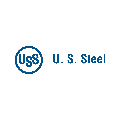
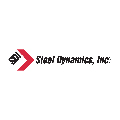

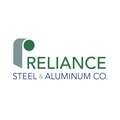
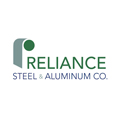

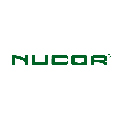










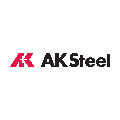
Contact Us
Here are GAO Tek’s Hydrogen cyanide gas detectors and they are further organized by feature:
Benchtop, Calibrated, Fast-response, Handheld, Alarm, Rugged, and Wireless.
If you have any questions about our product or want to place an order, our technical experts can help you. Please fill out this form or email us.
